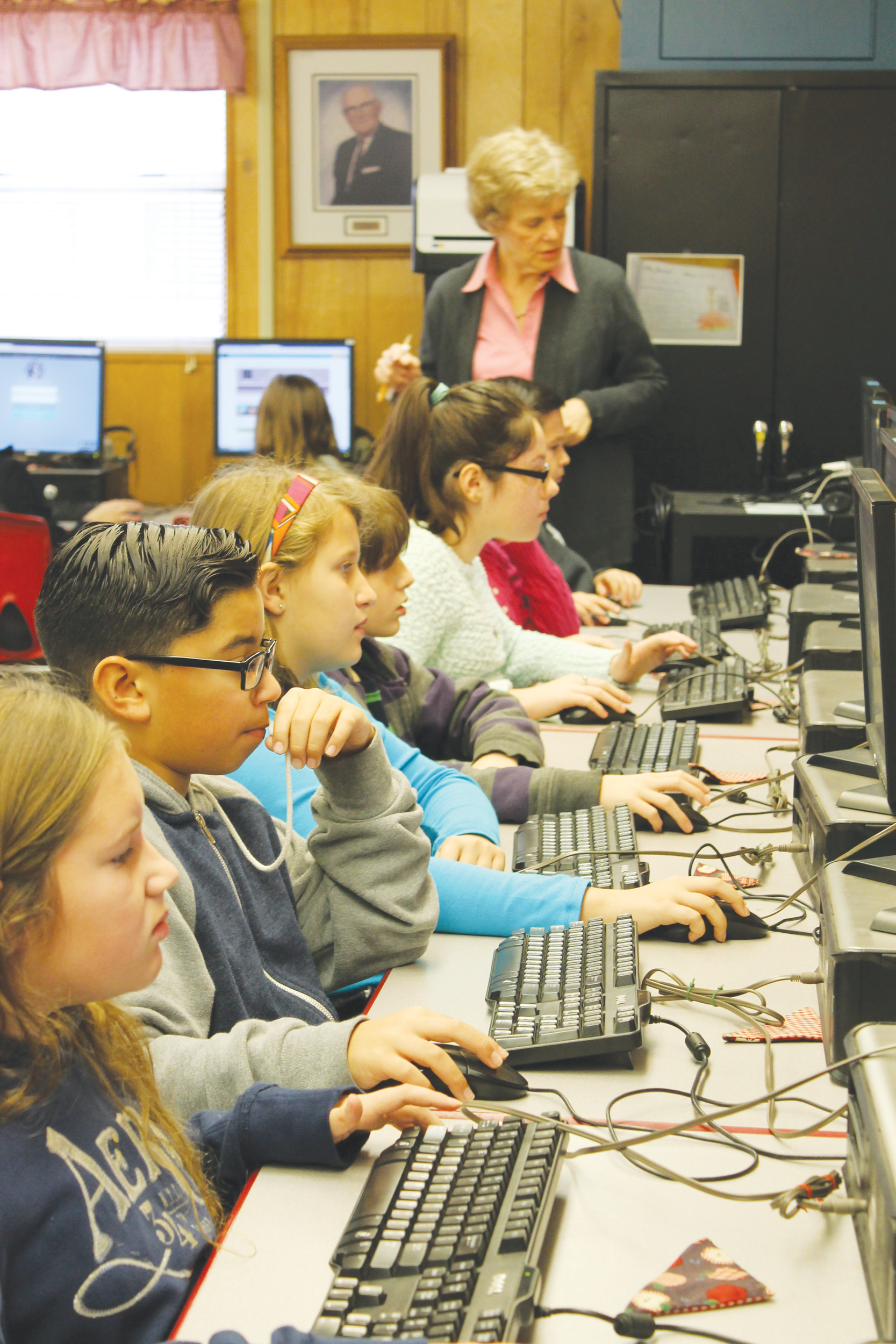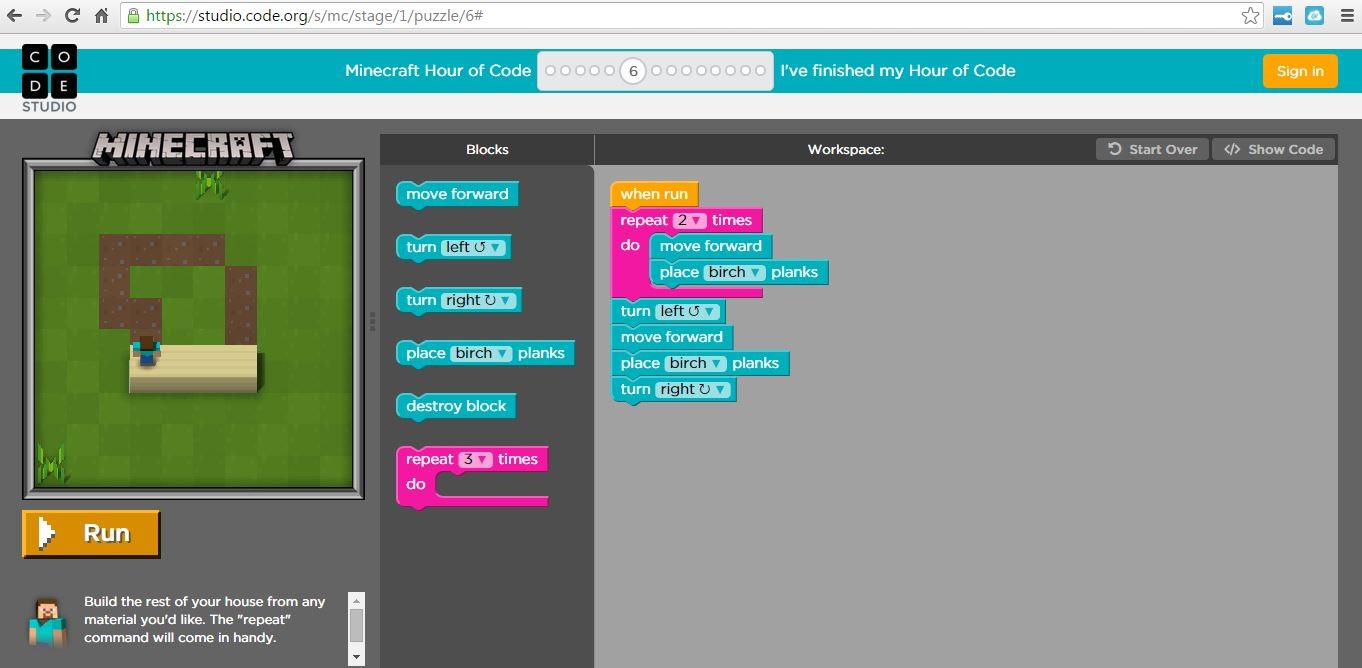Schools prepping next generation of computer programmers
ORANGE PARK – Using only his computer, Agustin Allala’s mission is to chop down three trees and build a house before sunset.
The 10-year-old student at W.E. Cherry Elementary is learning to …
This item is available in full to subscribers.
Attention subscribers
To continue reading, you will need to either log in to your subscriber account, or purchase a new subscription.
If you are a current print subscriber, you can set up a free website account and connect your subscription to it by clicking here.
If you are a digital subscriber with an active, online-only subscription then you already have an account here. Just reset your password if you've not yet logged in to your account on this new site.
Otherwise, click here to view your options for subscribing.
Please log in to continueDon't have an ID?Print subscribersIf you're a print subscriber, but do not yet have an online account, click here to create one. Non-subscribersClick here to see your options for subscribing. Single day passYou also have the option of purchasing 24 hours of access, for $1.00. Click here to purchase a single day pass. |
Schools prepping next generation of computer programmers
ORANGE PARK – Using only his computer, Agustin Allala’s mission is to chop down three trees and build a house before sunset.
The 10-year-old student at W.E. Cherry Elementary is learning to code – or tell a computer what to do by typing step-by-step computer commands – during a weekly 30-minute computer science class period. Allala learned to build code through one of three computer games chosen by Allala’s technology teacher through Code.org, an educational nonprofit that’s on a mission to expand access to computer science to children around the world including girls.
Allala clicks on one of the coding choices prompting the character to move forward three spaces before turning left to chop down one of three trees to fulfill the level’s requirements before advancing.
To complete the mission requires students to write about 10 lines of code. The student builds the code before hitting the play button, prompting the character to act out the script or code.
“What is under these blocks of code is Javascript,” Allala, 10, said. “You have to write ‘move forward’ then two parenthesis and a semicolon and that’s what under the blocks so it’s really interesting.”
Javascript, a language used by computers, is often used to make webpages interactive.
To earn more computer time building code, Allala gets up early every Friday morning for Code Club, hosted by Julie Smithers, the school’s technology teacher. She teaches coding to the school’s fourth, fifth and sixth grade students.
“A lot of this is trial and error,” Smithers said. “A lot of it is logic skills and solving problems which, to me, is critical in education. And not to give up. They keep trying until they get it and that’s when you hear cheering because they get so frustrated when they’re first learning. Then they get it and they have the a-ha moment. It’s very rewarding.”
Like Allala, Code.org Founder Hadi Partovi was 10 when he learned to code living in war-torn Iran. His father brought home a blank computer and a book about coding and he and his twin brother taught themselves to write code and, after moving to America, he graduated from Harvard University with two degrees in computer science. He worked in the technology field before starting the nonprofit that has gained the attention of celebrities and President Barack Obama.
In Partovi’s Technology, Entertainment, Design, or TED Talk, he said computers are changing the world and students need to learn algorithms and computer science in addition to dissecting frogs. Most schools do not teach computer science even though most companies will require computer programming in some form in the future. Through games and lessons on Code.org, students learn logic skills and creative ways to solve problems.
“In this day and age, computer science is no longer just vocational for getting a job, in this day and age, computer science is completely foundational for any job you many want to have in the next 20- [or] 30-years,” Partovi said in his Ted Talk. “So the real question is can the public school system evolve?”
The goal of Partovi’s nonprofit is to focus on expanding access to computer science and increase participation of girls and minority students. On Smithers’ wall hangs a Code.org poster of Malala Yousafzai, a Pakistani advocate for girls’ education.
“Right now, women are so underrepresented in computer programing and I’ve got a feeling that if any of these girls in this room loved the job, loved what they’re doing, they could get a job like that,” Smithers said and snapped her fingers.
Trinity Koonce, 10, built the code to move R2D2 through the levels of a Star Wars coding game. The goal of the computer game is to collect mouse droids and multiple them to total 20, earning a pass to move to the next level.
Even though Koonce said she is not completely sure she wants to be a computer programmer when she gets older, learning about coding has made her more curious about technology.
“Every time I see a game like this or a controller, it makes me think what kind of code made it happen?” Koonce said. “I play the Wii and I wonder how does it wirelessly connect to the TV?”
According to the Bureau of Labor Statistics, in the year 2020, there will be 4.6 million jobs in computing and information technology.











